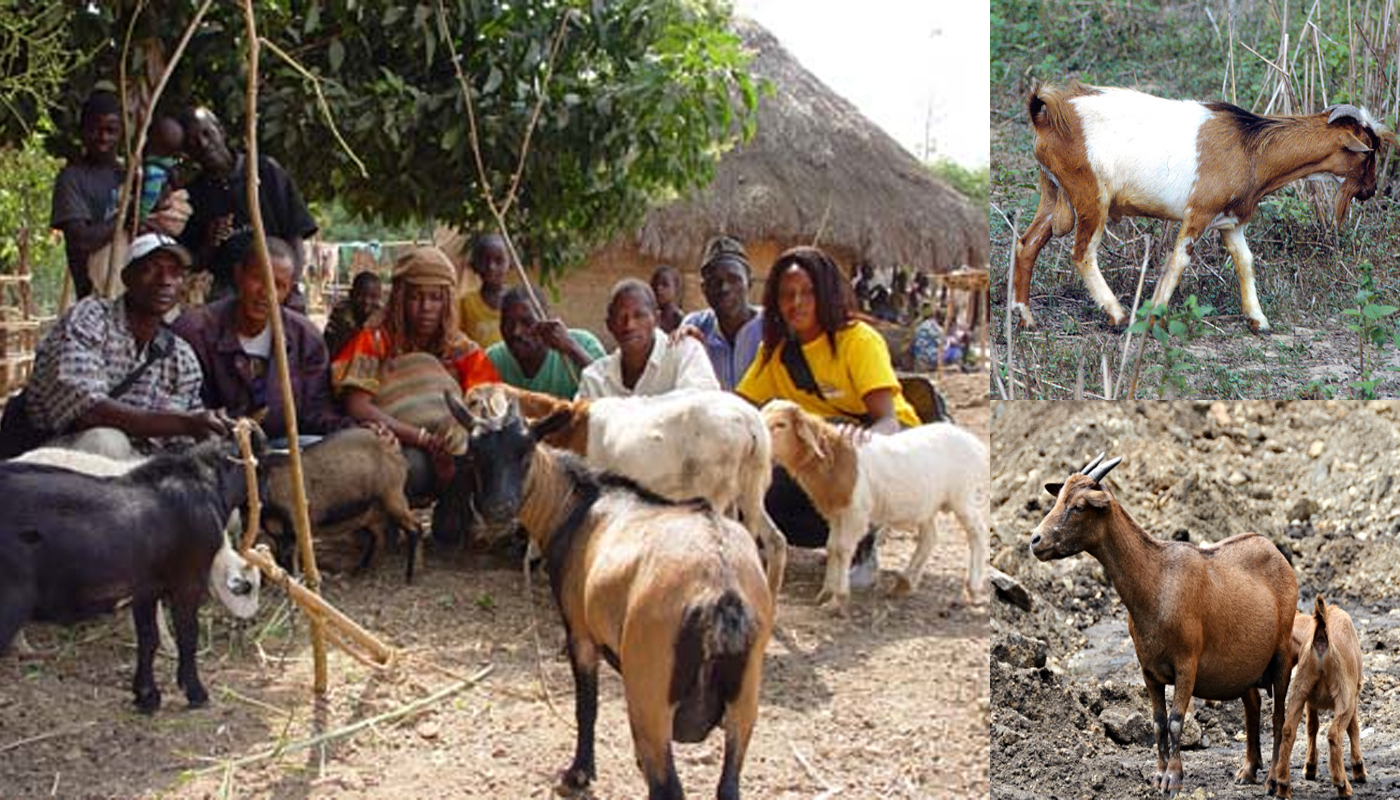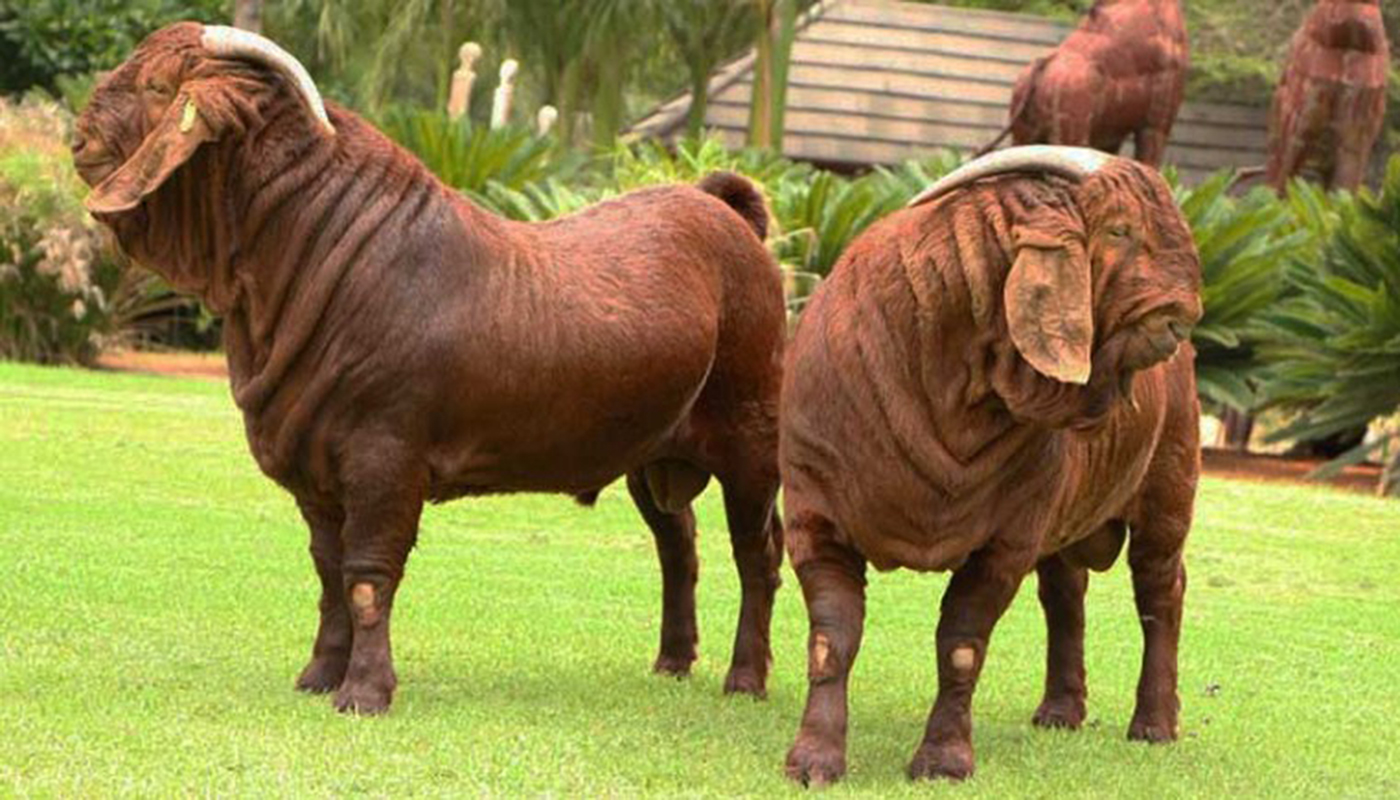
The Angora goat is a big ball of either ringleted or wavy hair. These beautiful poufy goats are calm and docile. They are very adaptable to many grazing environments but can be a bit delicate when they are shaved.
Although not advisable for a first-time goat owner they are a wonderful addition to most herds.
Angora goat Quick Profile Overview
| The Angora goat is prized for its valuable Mohair production and is the only goat produce true Mohair fiber | |
| Country of Origin: | Speculated as Turkey as the breed has ancient roots its ancestry is rather vague |
| Other Names: | None |
| Breed Size: | Large |
| You may Also Like: | Top 12 Large to Largest Goat Breeds |
| Main Purpose: | Fiber / Mohair production |
| Can be used for | Breeding, Fiber, Pets |
| You may Also Like: | 10 Best Goat Breeds for Fiber Production |
| Temperament: | Relaxed, calm and docile. |
| Good with Kids? | Good around supervised children. They are big and horned which can be dangerous to a small child |
| You may Also Like: | 10 Best Goat Breeds to Keep as Pet |
| Ideal Environment: | They need a lot of fresh green pasture with leafy bushes to graze on. |
| Ideal Climate: | If they are sheared in the spring they will endure the summer heat well. |
| Conservation Status: |
Not Listed by the *ALC Common and can be found at various breeders |
| Health Issues? | They are more prone to internal parasites. Their coats do need a bit of extra attention. They are also quite fragile and not as hardy as other goats when it comes to their health especially after they have been sheared. |
| Good Starter Goat? | They do have some extra maintenance and nutrition required due to their coats. |
| Goat Associations: | American Angora Goat Breeders Association |
| Goat Clubs: | As they are not readily listed please check with the various Goat Associations as listed above and or in our Useful Links section below. |
| Note: *ALC stands for American Livestock Conservancy | |
PHYSICAL CHARACTERISTICS
| These goats are a big woolly ball of hair. They look like a cross between a sheep, Old English Sheep Dog with goats’ horns. They are really docile and very calm considering their fringes usually cover their eyes. The doe is a lot lighter the buck. They have a smaller stature, face and body. The buck is a lot larger and heavier than the does. As he is bigger, he has been known to hurt the delicate does. It is always advisable to keep the Angora buck and does separate except for mating season if you want to breed them. Once they have mated it is best to once again separate the two |
||
| Color(s): |
White, Black, brown and red they both have similar color variations |
|
| Goat⇒ | Doe | buck |
| Breed Weight: | 110 lbs. | 224 lbs. |
| Breed Height: | 90 cm at withers | 122 cm at withers |
| Hair: | They have long hair which is either ringlets or flat hair | He has long flat or ringleted hair just like that of the females. |
| Ears: | Flat droopy ears that are not too long | His ears are flat and droop at the side of his head. |
| Horns: | They have horns that are flattish and protrude back and then outwards towards the ears. | The Angora bucks’ horns are much longer than females. They too protrude back but they have a spiral in them. |
| Matures at age: | 5 to 15 months | 3 to 15 months |
| Puberty Age: | 5 to 6 months | 4 to 9 months |
| Breeding Age: | 18 months | 1 year |
| Breeding Traits: | 1 Breeding cycle | Cover 20 to 30 does in 1 season |
DOE BREEDING & MILKING INFORMATION
| They are not the best breeders and can only be bred once a year | |
| Breeding Period/cycle: | Usually lasts 12 to 36 hours Ave. 21 days/18 to 24 days |
| Gestation Period: | Usually around 148 to 155 day but most are 150 days |
| Kids: | They do not usually produce twins. They usually only produce one kid at a chance. The kids are very delicate at birth and have to be taken care of or they have a high mortality rate. |
| Good Mothers? | They are good mothers and tend for the young as they are not born very sturdy as they are quite delicate at birth |
| Lactation Period: | 6 months |
| Milking From: | 4 to 6 weeks after kidding. Angora kids are very delicate and need all the nutrition of the mother milk. |
| Milk Quality: | Good, Their milk is fair and suitable for use |
| Milking Level: | Fair, They are not the easiest goat to milk especially if they are still sporting all their hair |
| You may Also Like: | Top 10 Best Dairy Goat Breeds |
GOAT FIBER PRODUCTION INFORMATION
| The Angora Goat is known for its excellent quality of fine mohair fibers. The Angora goat should be sheared twice a year |
|
| Fiber Production? | Excellent |
| Type of Fiber Produced: | Mohair |
| Age they Produce from: | 1 year |
| Approx. Quantity: | Doe:Kids – 3 to 5 pounds a year Adult – 8 to 16 pounds a year Buck:Kids – 3 to 5 pounds a year Adult – 8 to 16 pounds a year |
| You may Also Like: | 10 Best Goat Breeds for Fiber Production |
GOOD TO KNOW
| Some facts and useful information about the Angor Goat breed | |
| Where to buy them: | As mohair is a large industry there are not many websites that readily advertise Angora Goats. In order to find breeders to purchase these goats, you will have to check with the various Goat Associations such as the American Angora Goat Breeders Association or the American Goat Federation (AGF) |
| Agility: | The Angora goat is not as agile as most of the other goat breeds. They are bit bulkier and a little clumsy as their vision is party impaired by their fringe. |
| Interact with other animals: | They do not mind other livestock or farm animals. |
GENERAL INFORMATION:
Angora goats need more nutrition than other goats as their body needs it to produce hair.
Angora goats need extra attention when they have been shaved. Especially if the weather turns cold or during a thunderstorm.
They are more susceptible to both internal and external parasites due to their fur.
Even though Angora goat requires more attention then most other breeds they are extremely adaptable and do well in areas most other goat or sheep would not. This is especially true of their grazing habits.
They have two hair types:
Ringlets – which are known as type C goats. This is the finest mohair type and its hair is ringleted for the entire length of its fur.
Flat Lock hair – which is known as type B goats. This mohair looks wavier and tends to be poufy or bulky. The hair is coarser than that of the ringleted mohair.
Angora goats do not produce Angora they produce Mohair. Only Angora rabbits produce Angora.
Angora is smoother and stronger than wool. It is usually used for upholstery due to its strength and luster.
Their thick skin makes for excellent leather. But they are mainly just used for their fiber. Although they are not readily used for the production of leather as their Mohair is very valuable.
They are not really bred as a meat or dairy goat. They are primarily kept for their fiber and thick skin. But their meat has been said to taste great and some even consider it a delicacy.
HISTORY
Some interesting history about the Angora Goat breed with its prized Mohair fiber.
It is believed that the Angora goat has been around since the Paleolithic era. They could be a direct descendant of the Central Asian Markhor.
They were first introduced into Europe by Charles V in around 1554. They were not very successful during the time.
Angora goats were imported into the US around 1890 and 1910. Up until around the early 1800’s the Ottoman Empire held the Mohair trade and were very reluctant to let any other country cut into their powerful Mohair empire.
Twelve Mohair goats were sent to South Africa in 1838 by Sultan Mahmud II of the Ottoman Empire. Not wanting South Africa to be able to breed the goats the rams he sent over were all neutered so were infertile. However, one of the females was pregnant and gave birth to a buck. It was from here that the Mohair trade started in South Africa. South Africa are one of the top Mohair produces in the world.
In 1849 as a gift for helping with advice on how to grow cotton Sultan Abdulmecid first gifted seven adult goats to Dr. James P. Davis.
It was not until after the Civil War in America that the Mohair trade took off in America and the Angora goat population started to thrive in Texas. As there was sufficient grassland in Texas the Mohair industry there took off and is still today the third biggest producer of Mohair in the world.
VIDEO
USEFUL LINKS
- American Goat Society(AGS)
- American Goat Federation (AGF)
- American Dairy Goat Association (ADGA)
- American Cashmere Goat Association (ACGA)
- Canadian Meat Goat Association (CMGA)
- Canadian Goat Society (CGS)
- Animal Shelter (ASPCA)
- American Veterinary Medical Association
- American Poultry Association
- American Animal Welfare Society
- American Animal Control
- American Animal Husbandry Society
 West African Dwarf Goat Breed – Everything You Need to Know
West African Dwarf Goat Breed – Everything You Need to Know Fainting Goat Breed – Everything You Need to Know
Fainting Goat Breed – Everything You Need to Know Anglo-Nubian Goat Breed – Everything You Need to Know
Anglo-Nubian Goat Breed – Everything You Need to Know Oberhasli Goat Breed – Everything You Need to Know
Oberhasli Goat Breed – Everything You Need to Know British Alpine Goat Breed – Everything You Need to Know
British Alpine Goat Breed – Everything You Need to Know Verata Goat Breed – Everything You Need to Know
Verata Goat Breed – Everything You Need to Know Goat Health Guide: Recognizing Signs of Illness & When to Call the Vet
Goat Health Guide: Recognizing Signs of Illness & When to Call the Vet Chamois Goat Breed – Everything You Need to Know
Chamois Goat Breed – Everything You Need to Know 10 Goat Breeds that have Long Hair
10 Goat Breeds that have Long Hair Alpine Goat Breed – Everything You Need to Know
Alpine Goat Breed – Everything You Need to Know Thuringian Goat Breed – Everything You Need to Know
Thuringian Goat Breed – Everything You Need to Know Kalahari Goat Breed – Everything You Need to Know
Kalahari Goat Breed – Everything You Need to Know